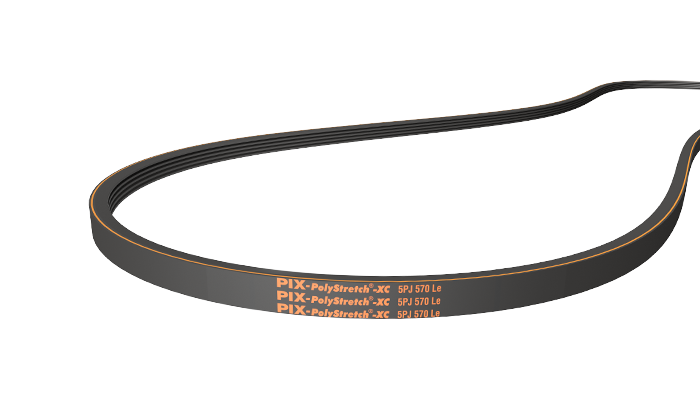| Section |
Thickness
(Th) (mm) |
Rib Pitch
(p) (mm) |
Min. Pulley Dia.
(mm) |
No. of possible Ribs |
Manufacturing Range |
Length Desg. |
Additional Product
Details |
Min.
(mm) |
Max.
(mm) |
| PJ |
3.50 |
2.34 |
20 |
2 - 240 |
280 |
5000 |
Le |
Click Here
|
| PK |
4.50 |
3.56 |
45 |
2 - 150* # |
550 |
5000 |
Le |
Click Here
|
| PL |
7.60 |
4.70 |
75 |
2 - 115 |
500 |
5000 |
Le |
Click Here
|
| PL |
7.60 |
4.70 |
75 |
2 - 78 |
5001 |
12000 |
Le |
Click Here
|
| PM |
13.30 |
9.40 |
180 |
2 - 55 |
950 |
5000 |
Le |
Click Here
|
| PM |
13.30 |
9.40 |
180 |
2 - 38 |
5001 |
12000 |
Le |
Click Here
|
Notes
* Belts are available in Moulded type: 60 ribs in each sleeve: PK-710, 720, 730, 740
# Belts are available in Moulded type: 130 ribs in each sleeve: PK-750, 770, 800, 875, 930, 1035, 1040, 1045,1094, 1115, 1170, 1200, 1220, 1240, 1250, 1323, 1363, 1370, 1385, 1397, 1422, 1435, 1515, 1570, 1585, 1665, 1705, 1820, 1835, 1866, 2245

 PIX-Collapsible-Belt Length Measure
PIX-Collapsible-Belt Length Measure PIX-Belt Drive Service Kit
PIX-Belt Drive Service Kit PIX-Digital Tension Meter
PIX-Digital Tension Meter PIX-X'Align Lasertool
PIX-X'Align Lasertool PIX-Belt Length Measure
PIX-Belt Length Measure PIX-Analog Tension Tester
PIX-Analog Tension Tester PIX-Belt Profile Gauge
PIX-Belt Profile Gauge PIX-Pulley Gauges
PIX-Pulley Gauges PIX-Pulley Guage Banded Belts
PIX-Pulley Guage Banded Belts PIX-Pentagon Poly-V Belts Wear Gauge
PIX-Pentagon Poly-V Belts Wear Gauge PIX-Pentagon Timing Belt Wear Gauges
PIX-Pentagon Timing Belt Wear Gauges PIX-X'Slit Belt Cutting Machine
PIX-X'Slit Belt Cutting Machine






